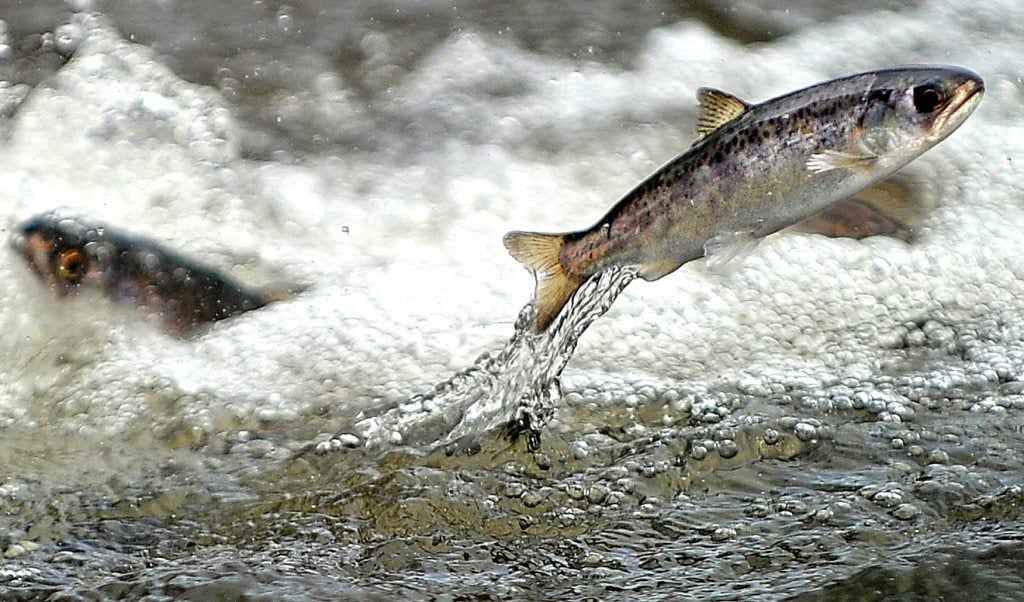MEDFORD, Ore. — Low water flows into the Rogue River this spring are reminiscent of the drought years that triggered the last two significant die-offs of spring chinook salmon from warm-water diseases as they headed to the Rogue Valley.
But state fish biologists studying the situation believe they have a water-release strategy that will stave off a repeat of spring chinook die-offs in 2001 and 1994.
In 1994 more than two-thirds of the run died in the low, hot waters of the Lower Rogue Canyon.
History shows that April flows of at least 2,000 cubic feet per second at the lower Rogue outpost of Agness — just downstream from the Rogue’s Wild and Scenic Section — appears to be enough to hold off an outbreak of columnaris, a natural warm-water disease that can devastate Rogue chinook runs.
Natural streamflow in April usually is enough to meet that threshold. But with drought-like spring tributary flows, the U.S. Corps of Engineers has been aggressively capturing runoff into Lost Creek Lake for later fish-friendly releases, meaning flows at Agness tipped perilously close to 2,000 cfs the past week.
After rain last week failed to produce expected runoff, state fish managers sought and received approval to up Lost Creek dam releases from 1,000 cfs to 1,250 cfs Thursday.
The idea was to push downstream flows to more chinook-friendly levels during the early portion of the run. Water biologists typically prefer to hold water back until late-spring heat moves in, and that could be as early as this week.
“If that doesn’t do it, we’ll have to release more,” says Pete Samarin, the Rogue District fish biologist who helps coordinate Lost Creek Lake water releases with the Corps of Engineers. “We’re pursuing additional releases next week as warmer weather moves in.
“It’s a horrible spring,” Samarin says.
The strategy worked during the last significant drought in 2015, when April and May flows at Agness didn’t drop below 2,000 cfs and no significant spring chinook losses were documented, Samarin says.
That was the first time extra April flows were released for spring chinook in at least the past 25 years, records show.
Columnaris is a bacteria that attacks the fishes’ gills and suffocates them, but it poses no threat to humans in contact with the water or those who eat the salmon.
It is highly infectious to chinook, particularly when lower Rogue temperatures eclipse 70 degrees, and was one of the main reasons why the Rogue’s environmental factors favored spring chinook over fall chinook.
“We need to have that water for later,” Samarin says. “But we need to protect fish stalled in the canyon right now to protect them from the bacteria.”



